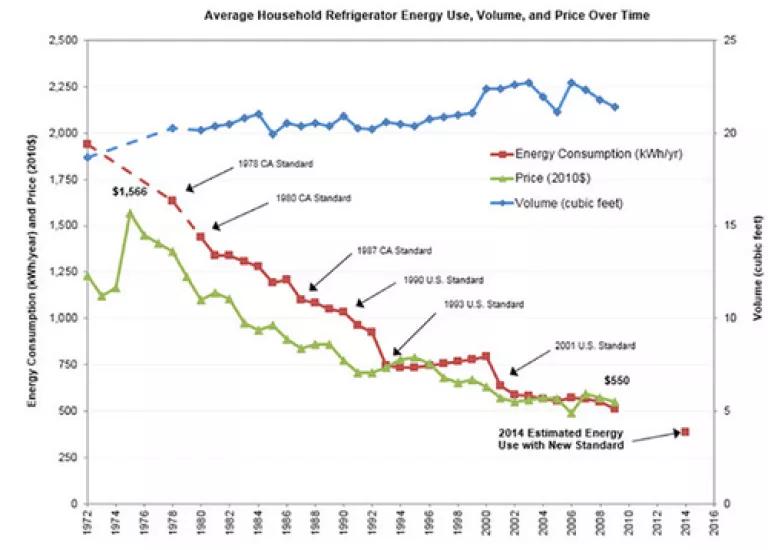
While you're no doubt aware that you're paying less money at the gas pump these days, you might not have noticed that over the past 40 years, you've been paying much less on your electric and natural gas bills thanks to the relentless work of the California Energy Commission to increase energy efficiency and other forms of clean energy in the state.
Efficiency - like better insulation to stop your home from leaking energy - is a hallmark of the California Energy Commission (CEC). When it was founded in 1975 amid record-setting high oil prices during the Arab Oil Embargo, its charter called for it to help Californians avoid the need for expensive sources of energy. In fact, its fundamental purpose was to provide ways for Californians to use less energy, which puts more money in their pockets.
The commission went straight to work in establishing the first-in-the-nation building and appliance energy efficiency standards. While just a pioneering effort in the 1970s, these energy-saving policies would ultimately become appealing to other states across the nation, and the federal government as well.
In an unprecedented initiative, California in the mid-1970s introduced energy-saving standards for refrigerators. At the time, refrigerators were the energy hog of the home and draining consumers of money on their electric bills. Enter the commission, whose standards ensured that Californians would not be forced to purchase energy-wasting refrigerators, but instead led to more energy efficient choices. From that point on, refrigerators in California homes wasted less energy, saving consumers energy and money, while the cost of refrigerators also decreased. Today's fridges use only a quarter of the electricity of their 1970s counterparts while offering 20 percent more storage - and costing half as much.

But the commission didn't rest on its laurels after one giant success. The CEC continued to save Californians money by enacting better energy saving standards across the board: not only for refrigerators and homes, but for light bulbs, TVs, clothes washing machines, dryers, dishwashers, microwaves, air conditioners, furnaces, water heaters, pool pumps, vending machines, you name it. But while the commission has demonstrated great success over the last 40 years in expanding these saving measures for consumers, it's critical that the CEC apply its expertise to the energy hogs of the new era: in particular to the fast-growing energy use from plugged-in appliances and equipment, some of which the commission is currently working on in the 2015 appliance standard rulemaking process.
Over this prolific forty year period, the totality of this commission's energy policies have saved Californians over $75 billion - and that number continues to grow with each new standard.
More than saving energy
But saving energy isn't the only way the commission has helped people in California - the CEC also plays a critical role in cleaning up the supply of energy. That's important because Californians suffer from more air pollution than any other state, perennially ranking #1 for the most polluted cities and counties in America. In moving toward the state's goal of getting a minimum of our energy supply from clean, no-emissions renewable resources (like wind farms and solar panels), the commission has permitted about 3,000 megawatts of solar energy. This has helped California become the largest solar market in the country - housing one-third of all American solar jobs.
At the same time, the CEC stays on the cutting edge of technology by investing in future clean energy technologies. As the administer of the state's multimillion-dollar clean energy research program, the commission co-funds an number of energy-saving technologies that ultimately bring latest-generation technologies closer to market so that consumers can afford them. Take the CEC's investments into clean vehicle technologies, for example: $535 million into parts of the clean vehicle ecosystem, which has helped locate the largest market for clean vehicles here in California.
At the end of the day, financial savings from the commission's efficiency work alone, over the last 40 years, has saved Californians billions of dollars. This has contributed to giving Californians some of the lowest residential electric bills in the country. While you don't see these savings at the pump, know that California's policies have been helping to drive down your spending on energy services - and putting more money in your pocket - since 1975.
